Komsomolsk Aviation
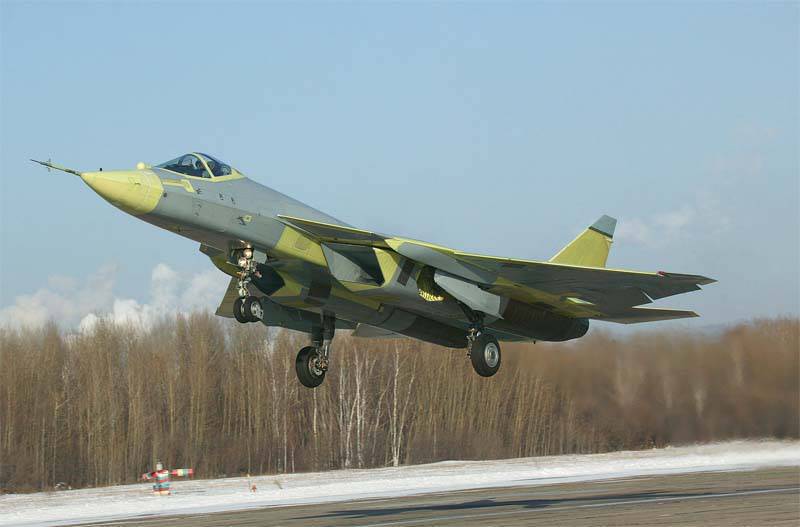
History Komsomolsk-on-Amur began on 10 on May 1932, when the ships Comintern and Columbus landed on the Amur coast, near the village of Perm, the first group of builders, numbering about 1000 people. The new city on the bank of the Amur was originally conceived as a military-industrial center in the Far East. The site for construction was chosen on the basis of geographical location. Since other already existing Far Eastern cities: Vladivostok, Khabarovsk, Nikolaevsk-on-Amur and Blagoveshchensk were either located close to the state border, or were too vulnerable to attack from the sea. Soon after the landing of the first builders, Komsomolsk began to prepare sites for the aviation, shipbuilding and metallurgical plants.
Despite the fact that Komsomolsk-on-Amur is located approximately at the latitude of Belgorod and Voronezh, the Far Eastern climate is very harsh. Komsomolsky district according to its climatic characteristics equated to the Far North. Snow cover in Komsomolsk falls in late October - early November, and comes down in late April. The average annual temperature is 1,5 ° C. In the vicinity of Komsomolsk-on-Amur is the boundary of permafrost.
Extreme climatic factors: in winter - strong wind and frosts below –40 ° C, and in summer - exhausting heat, combined with high humidity and midges, as well as difficult living conditions, poor and monotonous food strongly hampered the pace of construction of defense enterprises. Due to the lack of vitamins, many who worked on construction sites fell ill with scurvy, and the lack of warm clothing and cold living quarters caused a spike in colds. Management miscalculations led to an outflow of labor from construction sites. From the declassified archival documents, it follows that as of 1 on April 1934, of the 2500 Komsomol members who arrived at the construction, there were 460 people, the rest had left the construction site in various ways. The shortage of labor was soon filled up by military builders and prisoners.
Government decree on the start of construction of an aircraft factory on the banks of the Amur River in the area of Perm released 25 February 1932 of the year. On this day, the head of the main department of the aviation industry, deputy. People's Commissar of Heavy Industry PI Baranov, signed an order for the construction of an aircraft factory №126 - in the area of Perm.
Aviation The plant was originally planned as one of the largest major city-forming enterprises. The construction site was chosen near the Nanai camp of Dzemga (currently it is one of the districts of the city). Regarding the meaning of the Nanai name “Jemga”, different sources indicate a different interpretation. From the "light hand" of the writer Yuri Zhukov, the word "Dzemgi" is translated as "birch grove." This interpretation is even voiced in the museum of local lore of Komsomolsk-on-Amur. In fact, "Jomga" - most likely comes from Evenki "jumi", which means "abandoned plague."
The first squad of builders arrived in the area of the former 31 campus in Nanai, May 1932. Local residents warned that the site is often flooded, but the construction management did not listen to them. During the high autumn flood of 1932, the foundation pit for the foundation of the main building and the runway of the airfield under construction were poured, and the construction materials were partially destroyed. After the incident, the construction management made the appropriate conclusions and moved the new factory site with the runway to a higher place 5 km north.
A significant role in the construction of the plant was played by military builders. The first squads started arriving in 1934. In the history of Komsomolsk-on-Amur forever entered the ski crossing detachment of military builders, getting from Khabarovsk on the ice of Cupid. Even in the present conditions, not many amateur extremes, equipped with modern equipment, would have decided on such a campaign. In the most difficult conditions of the Far Eastern winter, military builders had to go across the ice of the river on skis, carrying on themselves everything they needed about 400 km.
In the second half of 1935, several of the first production workshops of the aircraft plant were built. Simultaneously with the installation of equipment, preparations were made for the assembly of aircraft. The first aircraft at aircraft factory №126 was built in 1936, it was the long-range reconnaissance aircraft Р-6 (ANT-7), designed by А.N. Tupolev. The P-6 had a lot in common with the first Soviet all-metal twin-engined monoplane bomber TB-1. By the standards of 1936, this car was certainly outdated, but it gave the Far Eastern aircraft manufacturers the necessary experience, which enabled them to proceed to the construction of more modern and sophisticated aircraft.

The first reconnaissance aircraft P-6 was able to be built earlier than the factory runway was ready for. Therefore, to test the aircraft equipped with floats, which allowed to take off and land on the water surface of the Amur River. In the future, most of the aircraft P-6 built with a wheeled chassis. After commissioning the factory runway, the aircraft P-6 used to organize regular flights between Komsomolsk-on-Amur and Khabarovsk. Soon the flying club began to operate on Dzomgah, where they transferred four biplanes U-2. In the flying club before the war, the legendary Alexei Maresyev, the hero of the Soviet Union, continued to fly in a fighter aircraft even with amputated feet.
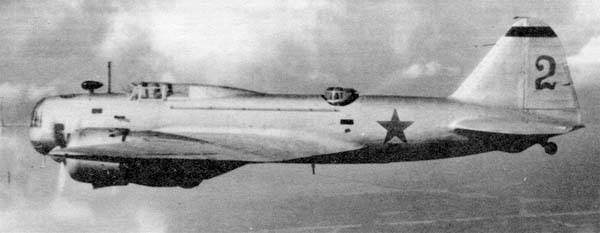
The following aircraft type being built at the plant was the DB-3B designed by S.V. Ilyushin. At that time it was a fairly modern long-range bomber. In 1938, the military took the first 30 aircraft. In 1939, factory workers built 100 bombers. In the winter of 1941, the construction of torpedo bombers began: with a retractable wheel chassis DB-3T and with float DB-3TP. Simultaneously, preparations were made for the construction of a bomber DB-3F (IL-4). This machine had a lot in common with the production of DB-3.
The team of the plant №126 made a significant contribution to the victory by building an X-NUMX Il-2757 bomber. During the war years, the plant significantly increased production capacity and productivity. Although the number of employees remained at the pre-war level, the annual volume of handed over aircraft increased by more than 4 times. A total of 2,5-1938 years in Komsomolsk was built 1945 bomber DB-3004 and IL-3.
After the end of the Second World War, the factory began the production of peaceful products - the Li-2 transport and passenger aircraft. This machine was a licensed version of Douglas DC-3. The first batch was delivered in 1947 year. For two years, managed to build 435 aircraft.
In 1949, the preparation for the construction of the MiG-15 fighter began at the Komsomolsk plant. The period of development and mass production of jet fighters Komsomol aircraft manufacturers consider the second birth of the plant. From this time on, the aircraft factory in Komsomolsk-on-Amur begins to produce first-class jet aircraft, which glorified the company far beyond the borders of the country. Three years later, a more advanced MiG-17 went into the series. For the construction of jet fighters at the plant carried out a radical renewal of the machine park and the expansion of production capacity. MiG-17F became the first aircraft produced in Komsomolsk and delivered abroad. In the middle of 50-s, it became clear that the factory strip no longer meets modern requirements, with increasing speed and weight of the aircraft increased load on the airfield cover, increased run-up during takeoff and landing run. The construction of the main concrete runway coincided with the beginning of the development of a supersonic Su-7. Dry.
The first Su-7 was handed over to military acceptance in the spring of 1958. The development of this aircraft went with great difficulty. The lack of knowledge and experience affected, besides, it was a very complex and still very “raw” machine. However, the factory workers overcame the difficulties with honor. From 1958 to 1971, more than 1800 Su-7 aircraft were built. The most widely used fighter-bombers Su-7B and Su-7BM. Since 1964, they were exported.
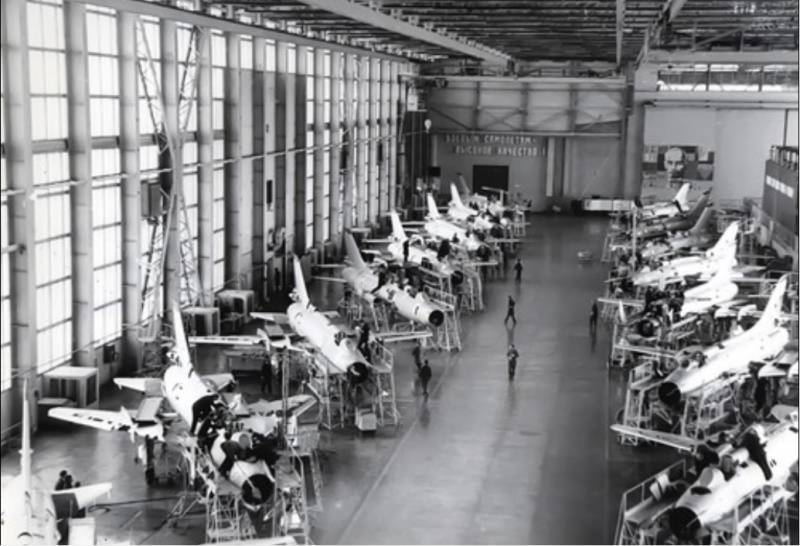
In 1969, the production of the Su-17 fighter-bomber with variable wing geometry began. Compared with the Su-7B, the new machine had the best take-off and landing characteristics, it was possible to choose the optimal sweep depending on the flight profile, but at the same time the design of the aircraft became much more complicated.
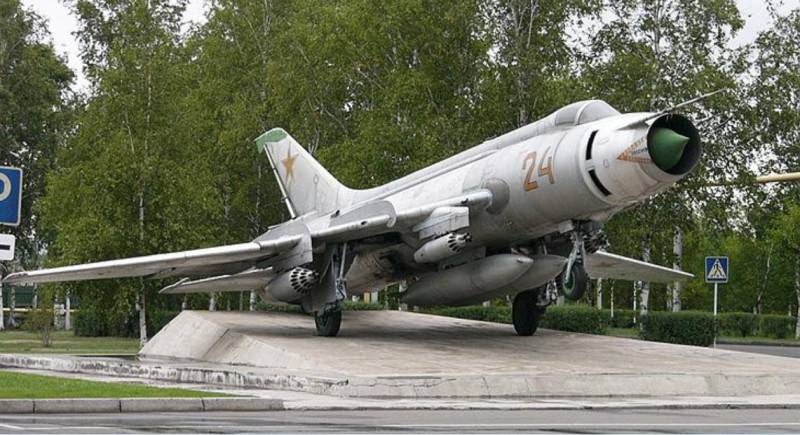
Fighter-bomber Su-17 one of the earliest modifications, established on the territory of KnAAZ as a monument.
Production of the latest modification of the Su-17М4 was completed in 1991 year. In total, Komsomolsk built more 2800 machines of modifications: Su-17, Su-17K, Su-17М / М2 / М3 / М4 and Su-17UM / УМ3. Export modifications had the designation: Su-20, Su-22 / M / M3 / M4, Su-22UM / UM3 / UM3K. Like its predecessor, the Su-7B, the Su-17 fighter-bomber participated in many regional armed conflicts and was popular with foreign customers.
Simultaneously with the fighter-bombers at the aircraft factory built anti-ship missiles, designed to arm submarines. The first was the PKR P-6, created under the leadership of the general designer, academician V.N. Chelomey. Its production began in 1960. On a submarine, a rocket was housed in a launch canister; for the first time in world practice, a folding wing was automatically used in the design of the anti-ship missile system P-6, which automatically opened in flight. In 1967, the P-6 rocket in production was replaced by the solid rocket Amethyst anti-ship missile (4K-66), created, like the P-6, in the OKB VN Chelomey. The new rocket could be launched from a submerged boat. Production of this rocket continued until the 1986 year.
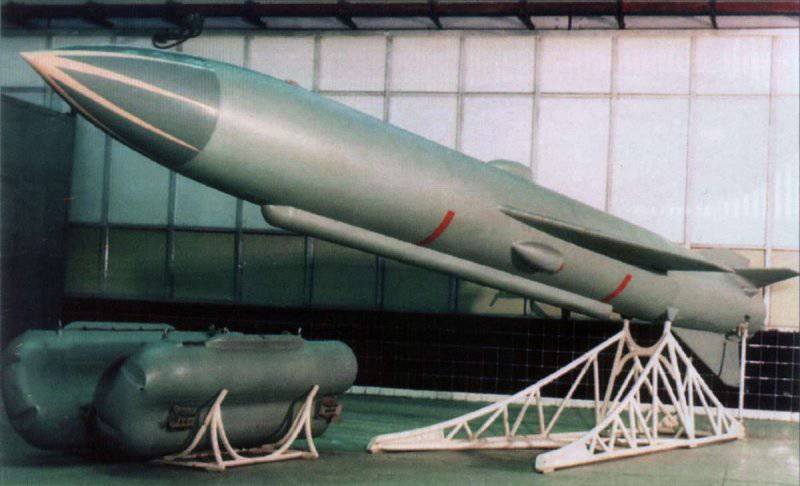
In addition to the production of airplanes of the Sukhoi Design Bureau and the PKR, as part of the production cooperation, the plant, which received the name Komsomolsk-on-Amur Aviation Production Association. Yu. A. Gagarin, (KnAAPO) supplied the turning parts of the wing and tail parts of the fuselage for the Su-24 front bomber to Novosibirsk, producing tail parts for the Il-62 passenger aircraft.
In 1984, the first heavy fighter 4 of the Su-27 generation was built on KnAAPO. On the basis of the Su-27 it was later created a family of single and double fighter Su-27SK, 27SKM Su-Su-27SM / SM3, 33-Su, Su-30MK, 30MK2 Su-Su-30M2, Su-35S. Vehicles based on the Su-27, were widely exported and now form the basis of the fighter fleet of the Russian Air Force.
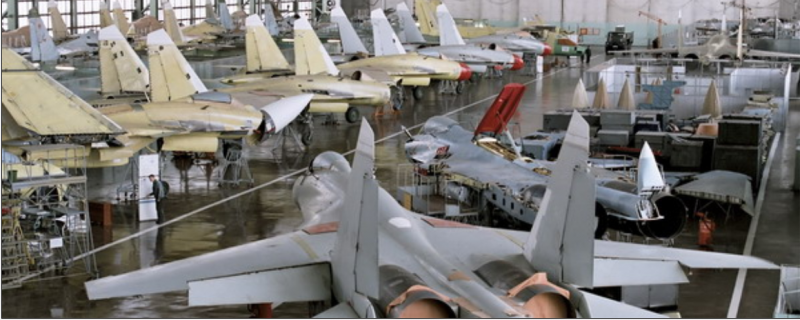
In 90-ies at the aircraft manufacturing plant in Komsomolsk, unlike many other enterprises in the industry, life did not stop. Although deliveries of new cars to our own air forces were virtually non-existent, export orders helped to survive. Su-27 / Su-30 family aircraft were delivered to Venezuela, Vietnam, India, Indonesia, China, Uganda, Ethiopia, Eritrea. In addition to the construction of new fighters, the company was upgrading the Su-27С to the level of the Su-27СМ / СМ3, as well as the refurbishment of the deck Su-33.
Simultaneously with the construction and modernization of combat aircraft, a civilian conversion program was being implemented. The first civilian models were the cargo C-80 (Su-80) and the amphibious aircraft Be-103. Unfortunately, these promising projects have not been developed.
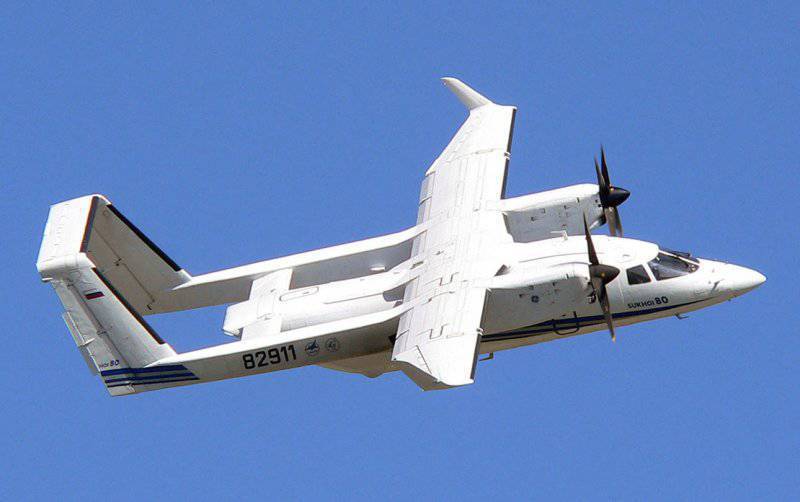
The C-80 turboprop, which had a sealed cabin, was designed to carry 30 passengers or 3300 kg of cargo over a distance of 1300 kilometers. The plane was ideally suited for regional routes, its important advantage was the ability to quickly convert from the passenger version to the cargo and back. The presence of a cargo ramp made it possible to deliver automotive vehicles and standard aircraft containers. The C-80 was equipped with two imported turboprop engines manufactured by General Electric CT7-9В hp with 1870 power. Due to Sukhoi’s reluctance to engage in projects that do not promise quick and large dividends, the C-80 program was closed at the stage of certification for airworthiness standards.
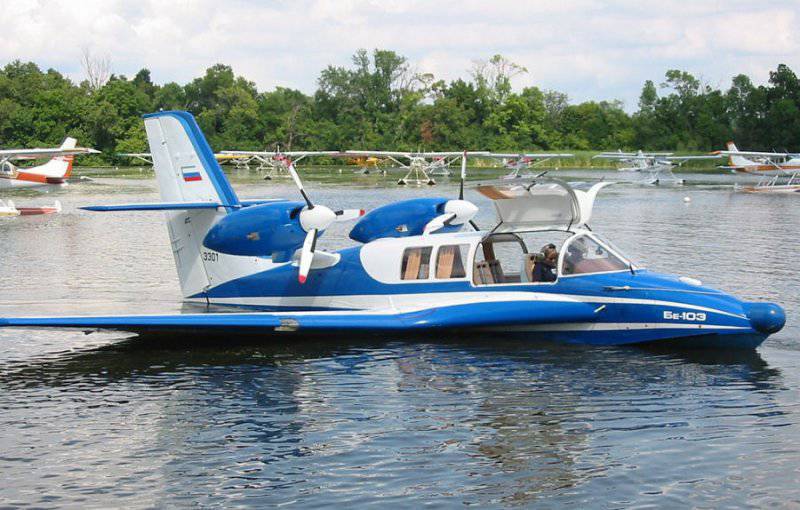
The same fate befell the two-engine amphibian Be-103. This machine could be very useful on short-haul lines in various regions of Siberia, the Far East and in the northern part of European Russia. The plane could be used with great benefit where there are a large number of rivers, lakes, small reservoirs and access to other types of transport is difficult. Now for flights to such places are used Mi-8 helicopters, which are at times the worst indicators of fuel efficiency. The construction of the Be-103 continued until the 2004 year, and in a few years it was possible to assemble 15 aircraft. Currently all work on the Be-103 is discontinued. A number of aircraft of this type are stored in the factory area in the open.
In December 2012, the Russian Air Force received the first 6 Su-35С. In addition to gaining air superiority, the new fighter has the ability to strike at land and sea targets. Unfortunately, for several reasons, the development of the Su-35S combat weapons was delayed, and they started combat duty only at the end of the 2015 year, although by that time the Komsomol aircraft manufacturers had handed over the newest fighter aircraft to the 48 military.
29 January 2010 of the year from the factory strip in the air for the first time took an experienced aircraft T-50, created as part of the PAK FA program. Today it is known about the construction of 9 experimental machines. In the past, the timing of the start of production of the new 5 fighter generation was repeatedly postponed. According to the latest statements of high-ranking officials, the mass production of the aircraft will begin in 2017 year.
From 1 in January 2013, KnAAPO entered as a branch in OJSC “Company“ Sukhoi ”and became known as a branch of OJSC“ Company “Sukhoi” “Komsomolsk-on-Amur Aviation Plant named after Yu. A. Gagarin” (KnAAZ). Over the years of its existence, more than 12 000 airplanes for various purposes have been built on it. In the 80-ies, the plant became the main producer of the Su brand. Currently, there are actually two enterprises in the plant where aircraft are being built.
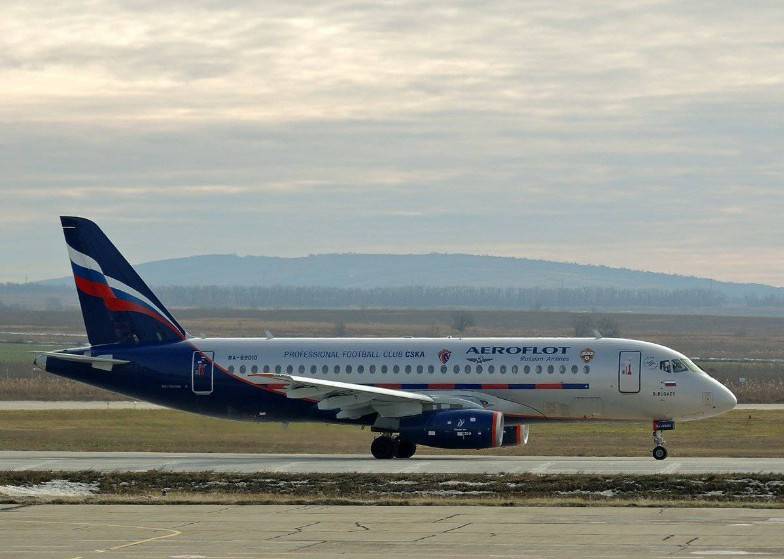
The most ambitious civilian program of our aircraft industry, brought to the practical implementation stage, was the passenger short-haul aircraft Sukhoi Superjet 100, created by Sukhoi Civil Aircraft (GSS) with the participation of a number of foreign firms. This led to the fact that the aircraft used up to 50% of imported parts. The share of components produced in Komsomolsk, about 15%. As of September 2016, the company GSS in Komsomolsk built 113 airliners, at a cost of one - $ 27-28 million.
Aviation holidays with demonstration flights and equipment exhibitions are regularly held on the territory of the enterprise. An extreme event of this kind was held on 6 on August 2014 of the year, and was dedicated to the 80 jubilee of KnAAZ. On this day, the gates of the plant were open to all comers.
Along the runway, a line of airplanes and helicopters and air defense equipment lined up - for the most part, these were products of Su: Su-17UM3, Su-24М, Su-25, Su-27СМ, Su-30М2, Su-35С, С- 80, “Superjet-100”, as well as the amphibian Be-103, MiG-31 interceptor, helicopters: Ka-52 and Mi-8МТШ, elements of the C-300 air defense system and П-18 radar.
In some planes, most likely, in those who are no longer destined to take to the air, free access to the cockpit was organized. For the sake of this opportunity lined up an impressive queue of children and adults.
One runway with an aircraft factory shares a fighter regiment that provides air defense of Komsomolsk-on-Amur. The first fighters appeared at Dzomgi airfield in 1939 year. These were the NNN-16 designs. Polikarpov. Operation "Ishakov" here continued until the beginning of the 1945 of the year, until they were completely replaced by the Yak-9 fighter jets. In August 1945, the pilots of the Fighter Aviation Regiment from Dzomog participated in the Sungarii offensive and in the liberation of the south of Sakhalin Island from the Japanese. In 1951, the last piston fighters on Dzemgah were driven out by jet MiG-15. In the 1955, the MiG-15 fighters were replaced by the MiG-17 fighters, and at the same time they had a squadron armed with patrolling Yak-25 fighter-interceptors with the Emerald radar.
In 1969, the 60 th Fighter Aviation Regiment switched to the Su-15 supersonic interceptors. However, for some time in parallel, double interceptors Yak-28П were used, which had a greater range with the worst acceleration characteristics. In the 70 of the early series, the Su-15 was replaced by the upgraded Su-15TM. These interceptors flew very actively from the Dzyomgi airfield right up to the 1990 year. Night flights were especially spectacular when Su-15TMs, taking off at a boost from the jets of flame, beating out of jet engines, literally stuck into the dark sky.
The 60 th iap deployed on the Dzyomg became the leader in the Air Force in the process of retraining for fighters of the fourth generation Su-27. The pilots of this aviation unit were pioneers in the development of new aviation technology. The first modernized Su-27CMs subsequently arrived here.
In the course of regular organizational and staff measures aimed at "optimizing" the number and "increasing combat effectiveness" in the 2004, the 60 th Fighter Aviation Regiment was united with the 404 "Tallin" Order of Kutuzov III degree fighter aviation regiment. As a result, the 23 th "Tallinn" Fighter Aviation Order of the Kutuzov Third Class was formed. In fact, this reorganization was due to the fact that there were simply not enough fighters in the aviation regiments. The state did not allocate money for the purchase of new aircraft, and one regiment decided to liquidate it. The fighter regiment, based on the Dzyomgi airfield, is traditionally the headquarters for many new and modernized Su-brand cars, and it was here that the new Su-35С arrived. This is primarily due to the proximity of the front regiment to the manufacturing plant and allows, if necessary, to quickly repair and treat "childhood sores" in the factory, with the participation of representatives of KB. Currently, there are fighter jets on the Dzomgah as part of the 23-iap: Su-27CM, Su-30М2 and Su-35С.
Regular passenger flights from Komsomolsk-on-Amur began at the end of the 30-s. Since the Dzyomgi airfield was occupied by factory and aircraft of the fighter air regiment, a dirt strip for passenger aircraft was built near the Amur River near the village of Parkovy. From this plane flew: By-2, An-2, Li-2, IL-12, IL-14. Subsequently, this runway was used by the aeroclub, and parachutists were trained there. Unfortunately, due to the economic turmoil in the 90s, the flying club practically ceased its activities. However, in 2016, information appeared about the re-creation of an aeroclub on the basis of the small aviation faculty of the Technical University, with financial support from KnAAZ.
The construction of a new city airport began at the end of 60 in the village of Khurba, in 17 km from Komsomolsk-on-Amur. The unpaved runway with a length of 800 meters in this place was built during the war years, but only from 1948, the 311 th air defense system was permanently based here. In the post-war period, the fighters were armed with this regiment: Yak-9, MiG-15, MiG-17, Su-9. After the transition to jet technology, construction of a concrete concrete runway began in Khurba, which subsequently determined the choice of the aerodrome for the separation of the civilian sector.
At the end of the 60-x, due to the exacerbation of the situation on the Soviet-Chinese border, the leadership of the USSR Air Force decided to relocate the 277-th bomber Mlavsky Red Banner Aviation Regiment from the GDR to Khurba. At the time of the redeployment, the 277-th bap was armed with an Il-28 bomber, including an Il-28Sh assault modification, at the Far Eastern airfield. This version of the IL-28 was specifically designed to counter the "Chinese threat" and was designed to act from low altitudes with unguided rockets against enemy manpower and equipment. The plane of the aircraft during the factory repair was refined to ensure the possibility of suspending 12 units with 57-mm HAP.
In 1975, the regiment's pilots were among the first in the Air Force to begin to retrain for new Su-24 front-line bombers with variable wing sweep, while continuing to operate the Il-28 in parallel. Simultaneously with the retraining at Su-24, reinforced concrete shelters were built, as well as expansion and improvement of the military camp. Here, on the outskirts of the airfield, an aviation equipment storage base was created, in addition to the IL-28 277, bap sent their exhausted Su-15 and Yak-28 here.
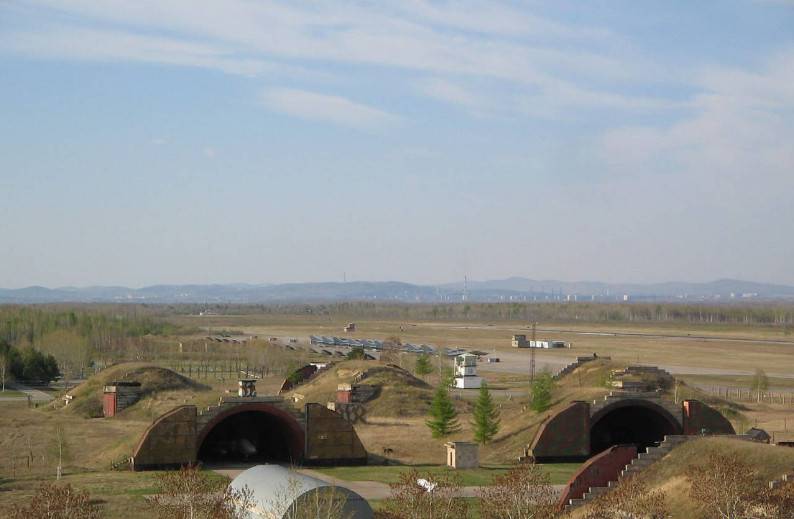
In 1997, at the height of the market reforms, the personnel of the 277-th began to retrain for the upgraded Su-24M. By that time, bombers of this type were no longer mass-produced, but were obtained from other aviation units that had undergone "reform" and "optimization".
In the spring of 1998, a case occurred in Khurba when the old dirt belt, built back in the war years, came in handy. During landing after performing a training task at Su-24M (w / o 04 white), due to a hydraulic failure, the main landing gear did not come out. Attempts to release the chassis using overloads during the execution of various maneuvers ended in failure, after which it was decided to sit "on the belly" on the old dirt strip. The landing was successful, the aircraft received minor damage and subsequently continued to fly after repairs.
The planes of the Mlavsky regiment took part in all the major exercises held in the Far East. They have repeatedly participated in the elimination of ice jams during the spring flood on the rivers of the Far Eastern Federal District, carrying out point bombing of the FAB-250 bombs in the river banks to prevent flooding of settlements and the destruction of hydraulic structures and bridges.
Approximately from 2005, there was persistent talk about the imminent rearmament of the 277-bap from the “outdated” Su-24М to the modern Su-34 bombers. Instead, in the midst of "Serdyukovschiny" combat aircraft based in the Far East, was struck again. In 2009, the Ministry of Defense of the Russian Federation decided to liquidate 302, which was based in the village of Pereyaslovka, 60 km from Khabarovsk. Able to take to the air, the Su-24M flew from Pereyaslki to Khurba. Part of the ground equipment and weapons was delivered by military transport aircraft. The rest was transported by road along the Khabarovsk-Komsomolsk-on-Amur highway. At about the same time, under Komsomolsk, a part of the 523 equipment was transferred to the Vozhaevka airfield.
At the airfield Khurba in the period of mass reductions and reorganizations based combat aircraft of other aviation units, which were driven from their airfields. For some time, in parallel with the Su-24M front-line bombers, here were MiG-29 404-iap fighters, previously based at the Orlovka airfield in the Amur region, and Su-27 216-iap from Kalink airfield near Khabarovsk. As a result, in Khurba, where a large number of aircraft had accumulated, the 6988-I Mlavskaya air base of the 1-level was created. However, it was soon renamed 6983-th Guards Aviation Vitebsk twice Red Banner, the Order of Suvorov and the Legion of Honor the base of the Normandie-Neman 1-level. The Bomber Regiment, based in Khurba, has the former designation - 227-th bap (military unit 77983), but without the honorary name Mlavsky.
The composition of the bomber regiment in Khurba is interesting because there are Su-24M with various avionics. One of the first Su-227М24 aircraft that had been repaired and upgraded began to arrive in 2, which was upgraded according to the version proposed by Sukhoi OJSC (GUSAR design and development work), and there are also airplanes with auxiliary navigation equipment SVP-24 ZAO Gefest and T ". Compared to the variant from JSC Sukhoi, the equipment SVP-24 turned out to be much more practical, cheaper and more accurate. Old men Su-24M, equipped with SVP-24, in their percussion capabilities are not inferior to more modern machines. According to information available in open sources, at the beginning of 2016, in Khurba there was a 24 front-line bomber. At the end of May 2016, the first four Su-34 flew to Khurba. The flight of these planes to Khurba marked the beginning of the re-equipment of the 277-th bap to a new type of front-line bombers. It is worth saying that in the vast territory of the FEFD, front-line bombers are constantly stationed only at Komsomolsk-on-Amur.
Regular flights to Moscow from Komsomol Airport Khurba began in 1977. In the middle of 80, Komsomol Airport was an important link in providing air communication with remote taiga settlements of the Khabarovsk Territory. The L-410 aircraft of the Komsomol United Aviation Squadron operated flights to Ayan, Blagoveshchensk, Vladivostok, Nikolaevsk, Polina Osipenko, Roshchino, Khabarovsk, Chegdomyn, Chumikan. During the day, the airport took 22 regular flights. Only in the direction of Khabarovsk from Komsomolsk, eight flights were made daily with an acceptable ticket price. Usually the flight time to Khabarovsk was 40-45 minutes, which was very convenient for passengers who did not want to waste time on an eight-hour train ride. At the moment, this can only dream of. The largest number of passengers transported in 1991 year. Then the airport services used 220 thousand passengers, in addition, 288 tons of mail and 800 tons of cargo were delivered.
The sharp decline in passenger traffic occurred in the 90s. This led to the fact that in winter the airport almost did not operate. In 2009, Vladivostok Avia resumed flights on the Moscow-Komsomolsk-on-Amur-Moscow route on the Tu-204 airliner. After Vladivostok Avia, which was experiencing economic difficulties, was absorbed by Aeroflot, flights from Komsomolsk-on-Amur to the western direction either stopped or resumed again. Currently, most residents of Komsomolsk-on-Amur in order to get to the center of the country, are forced to get to the airport of Khabarovsk.
In 2010, the then leadership of the Ministry of Defense attempted to oust civilian carriers from the territory of the Khurba airfield. This was motivated by the "need to eliminate violations of the legislation of the Russian Federation in the field of land use." Thanks to the intervention of the regional authorities, the airport was then defended. However, in April 2016, the Federal Property Management Agency approved the terms of the privatization of 100% of shares of Komsomolsk-on-Amur Airport JSC. The state would like to receive 61 million rubles for this object, which is rather strange against the background of talks about the development of the Far East, conducted from the highest stands. It is unlikely that any private investor will want to invest in a remote region in which the federal center does not wish to maintain transport links. And this, moreover, that Komsomolsk-on-Amur, among other Far Eastern industrial centers, occupies an absolutely unique position. In the region, yes, probably, and there are no more cities in the country where there would be an aircraft factory of a similar scale and two large military aviation units.
Based on:
http://forums.airbase.ru
http://vertoletciki.ru
http://www.interfax.ru/business/503940
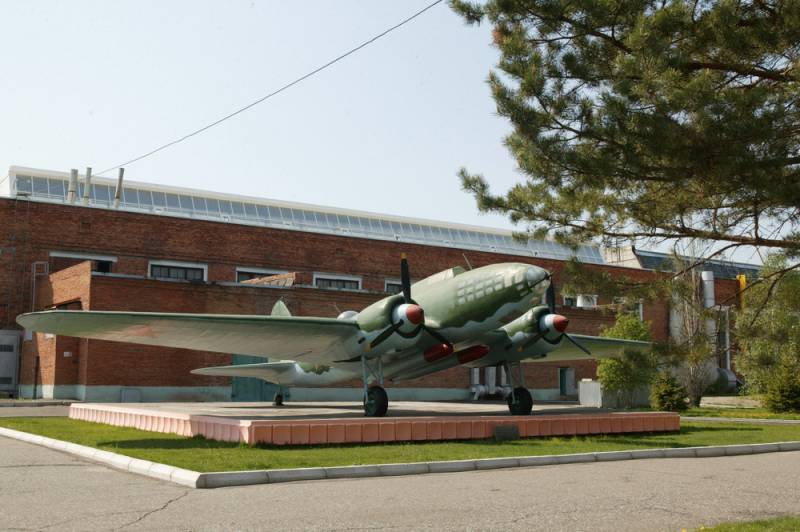
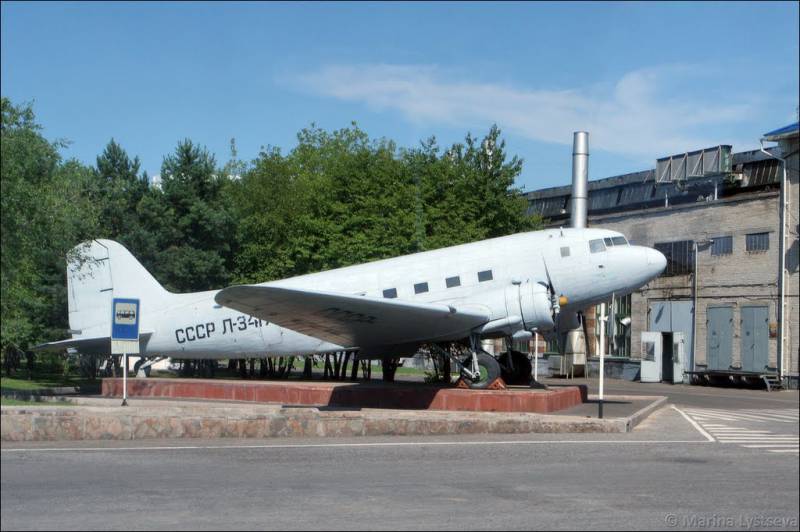
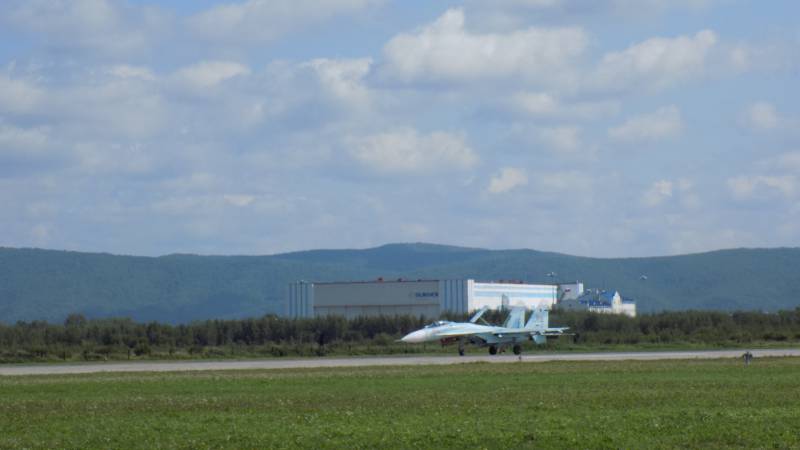
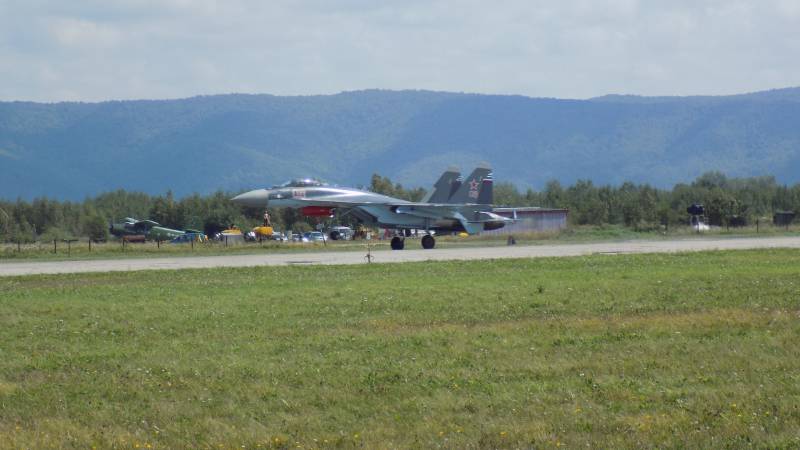
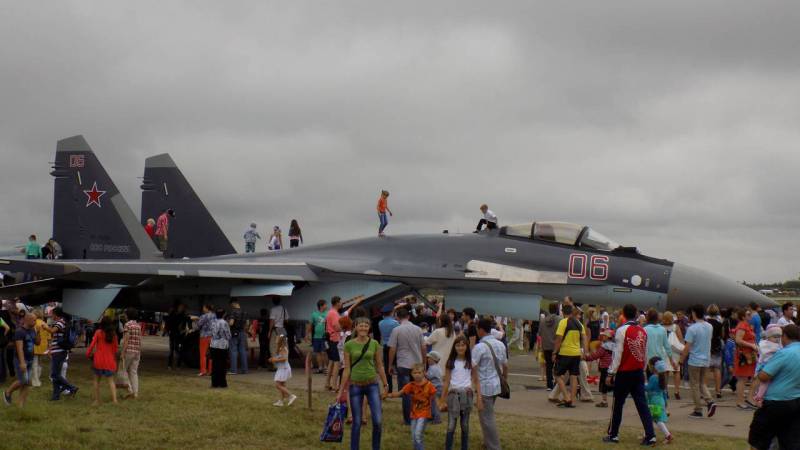
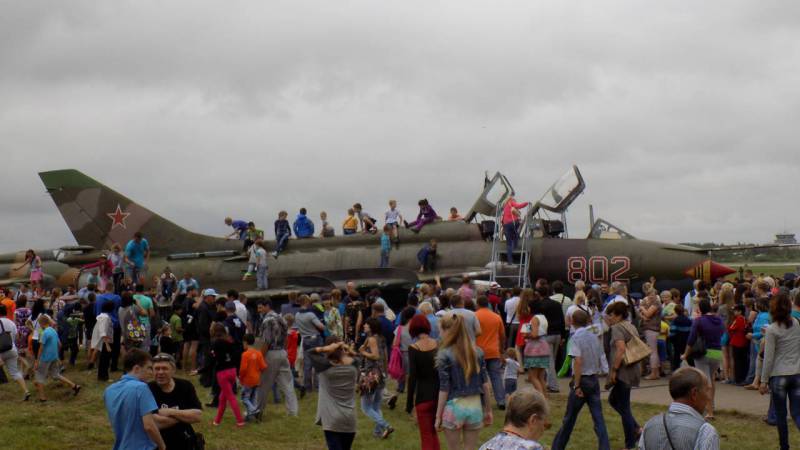
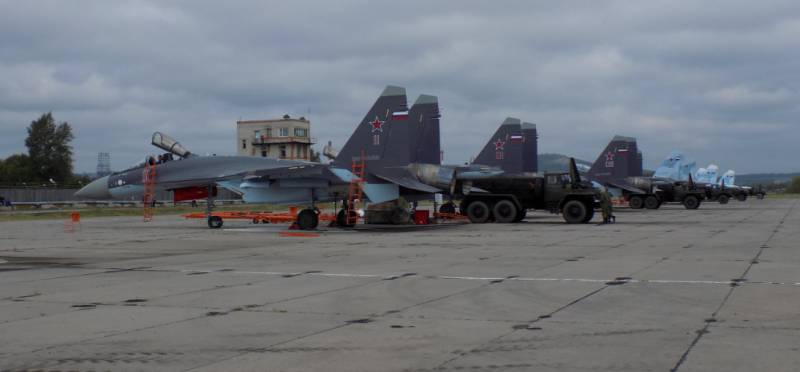
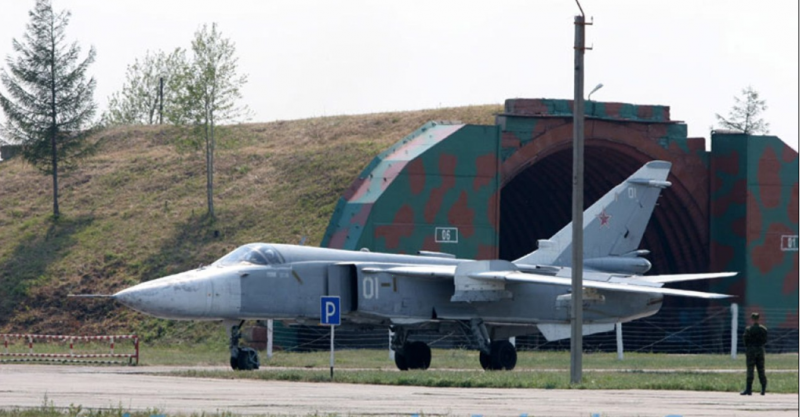
Information